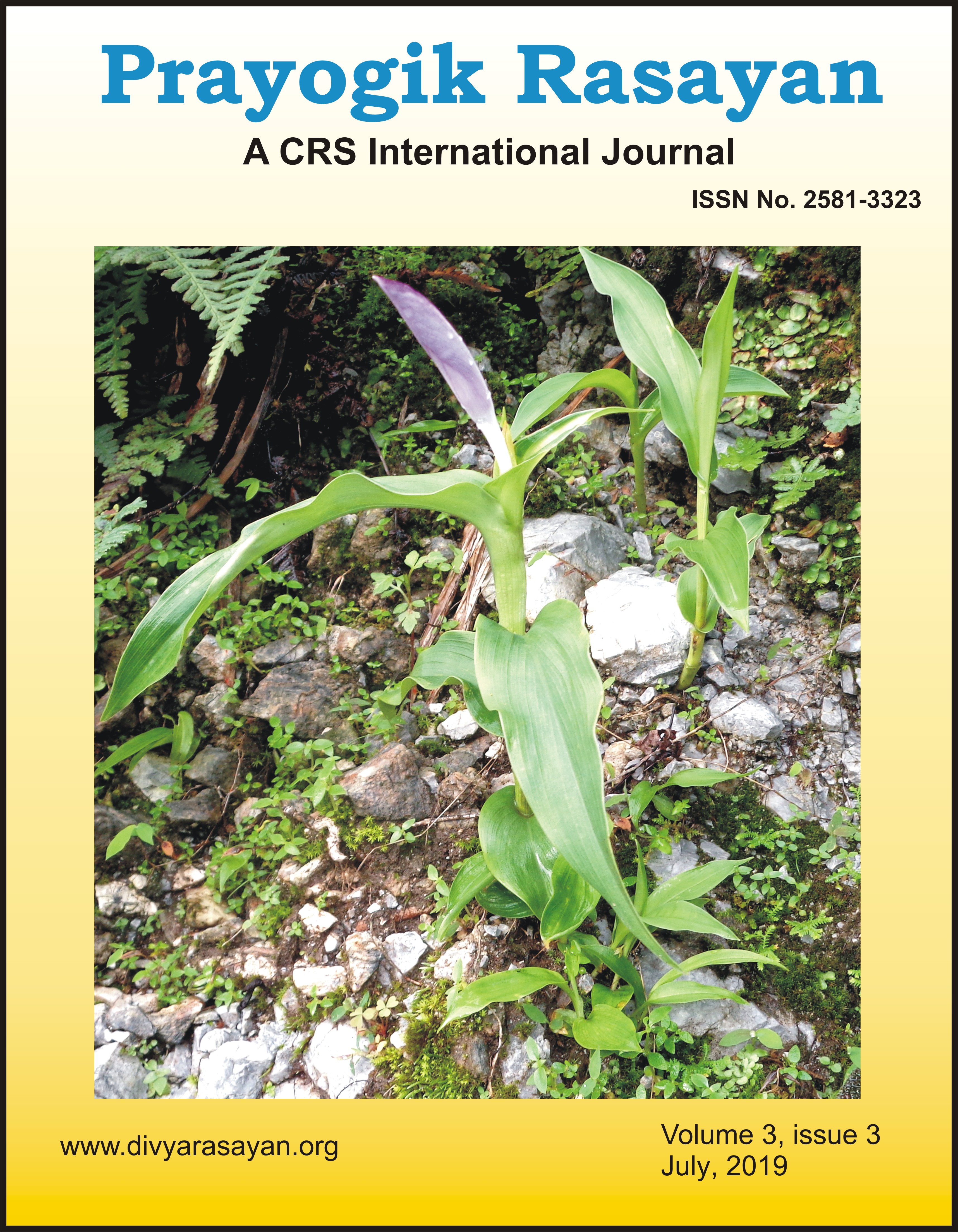


Kakoli (Roscoea purpurea) is an important ingredient of Chyawanprash which is well known for its anti-ageing activities since pre-historic period. First isolation of a phytosterol Stigmasterol has been reported from the leaves of Kakoli.

Prayogic Rasayan 2019, 3 (3), 21-22
DOI: https://www.doi.org/10.53023/p.rasayan-20190224
Abstract
Kakoli (Roscoea purpurea) is an important ingredient of Chyawanprash which is well known for its anti-ageing activities since the pre-historic period. While investigating the chemical constituents of Kakoli, herein we report the first isolation and spectroscopic characterization of a phytosterol stigmasterol 1 from the leaves of Roscoea purpurea. The molecule constitute a rigid 6-6-6-5 tetracyclic backbone with one secondary hydroxyl group attached at the 'A'-ring and one branched C10 hydrocarbon chain in the other end of the molecule. Energy minimized structure revealed that the molecule is 1.73 nm long having a polar 'OH' group attached at the end of an almost planar lipophilic steroidal skeleton making it useful as a functional nano-entity.

Prayogic Rasayan 2019, 3 (3), 23-25
DOI: https://www.doi.org/10.53023/p.rasayan-20190222
Abstract
The release of lysosomal hydrolytic enzymes plays a major role in inflammation. The resemblance of lysosomal membrane to red blood cell (erythrocyte) membrane is widely employed in evaluating the effect of plant extracts in stabilization of cellular membranes and thereby to predict the possible anti-inflammatory potential. Thus the present study was undertaken to evaluate the red blood cell membrane stabilization potential in eight medicinal plants that have been utilized as anti-inflammatory remedies in Sri Lankan traditional medicine. The hydroalcoholic extracts of Argyreia populifolia, Atalantia ceylanica, Hibiscus furcatus, Leucus zeylanica, Mollugo cerviana, Munronia pinnata, Olax zeylanica and Plectranthus zeylanicus were prepared and 10% suspensions of red blood cells in normal saline were incubated with 1000 µg/mL of each extract. The absorbance of the released hemoglobin was measured spectrophotometrically. Diclofenac sodium was used as the reference drug. Based on the results of the preliminary assay, the most potent extracts that possesses ≥ 50% stabilization potential (i.e. H. furcatus, L. zeylanica and P. zeylanicus) were subjected to concentration-response studies and EC50 values were determined. H. furcatus extract has shown the highest membrane stabilizing potential with an EC50 of 51.92 µg/mL which is even better than the reference drug (EC50=131.9 µg/mL). Moreover, a significant activity was observed in L. zeylanica (EC50 = 81.35 µg/mL) while a considerable membrane stabilization potential was detected in P. zeylanicus (EC50=219.6 µg/mL) as well. Thus, the present study revealed that the plants utilized in folklore medicine in Sri Lanka as anti-inflammatory remedies are capable of stabilizing the cellular membranes.